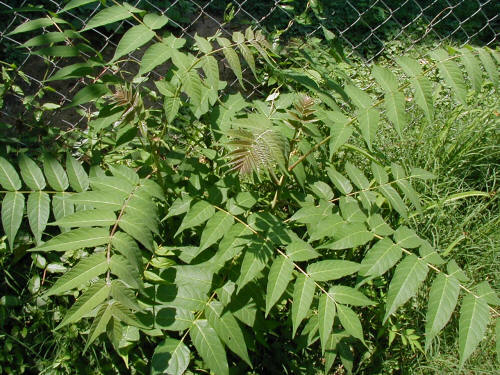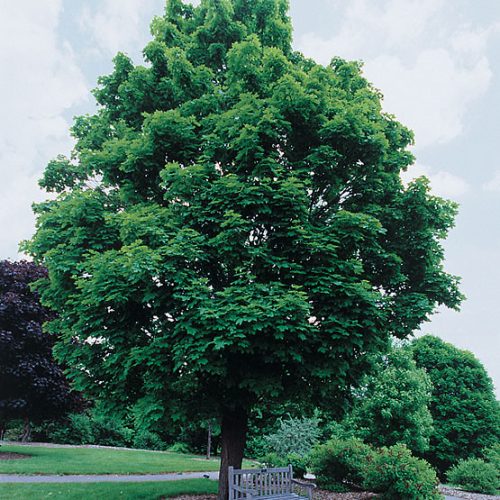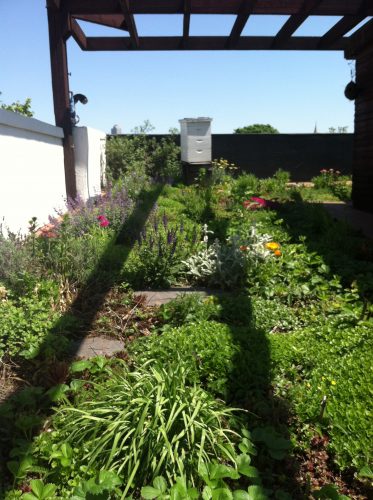The main metaphor of Betty Smith’s novel “A Tree Grows in Brooklyn” is the hardy Tree of Heaven. The major inspirational theme that she used was that the Tree of Heaven’s persistence was like her character’s and families ability to overcome adversity and thrive. Little did she know that this plant is an invasive species that is actually capable of widespread destruction of urban property and native ecosystems.
Species can be characterized into four different groupings:
- Native and invasive
- Native and non-invasive
- Non-native and invasive
- Non-native and non-invasive
Many people confuse these terms and think that non-native and invasive are synonymous terms. You can have a species that is non-native and non-invasive, such as the Japanese Maple that may not be the best fit for an ecosystem, but does not harm it in any damaging way. While on the other hand, you can have a species that is native and invasive such as the Virginia Creeper, a weed that wreaks havoc on gardens.
Non-native invasive species are the biggest problem for both humans and the environment. First of all, non-native invasive species have large impacts on ecosystems that they invade by threatening biodiversity, changing the chemical makeup of the water, altering the food web, and transforming the availability and distribution of resources within the ecosystem.
Non-native invasive species are so powerful when they enter a new ecosystem because they evolved with other competitors and native species evolved in the absence of invasive species. Therefore, native species lack the ability to compete with non-native invasive species for resources which gives non-native invasive species the upper hand when resources become scarce. Consequently, there is an overall decrease in biodiversity as the area invaded becomes less populated by native species and more taken over by non-native invasive species.
They can dominate an ecosystem to the point where they are the only organism that can occupy it, creating what scientists call a “dead-zone” because there is no other biodiversity within the area.
Non-native invasive species effect on humans is less direct but still detrimental. The main way that humans are affected is economically by paying for direct management and control of the invasive species, and decreased productivity of crops. The annual estimated cost in the United States of non-native invasive species control and productivity loss is about 120 billion dollars per year! Humans also pay this price in a non-quantifiable manner; by destroying local habitats, non-native invasive species destroy ecological services that we rely so heavily on such as water and air quality protection, carbon sequestration, and mitigation of the heat island effect.
Is important to avoid non-native plants because they are alien to local organisms and thus break down the web of life. A native oak tree in New York attracts a huge ecosystem of native bugs, plants, animals, microbes and other life forms within its roots and canopy, which in turn connect to ecosystems around it.
Non-native species (both invasive and non-invasive) are a big problem for New York City. According to the New York Department of Conservation there are six types of trees that are considered to be non-native in New York. Believe it or not, two of these types of trees could probably be found on almost every city block! The non-native invasive species is called the Tree of Heaven (Ailanthus altissima) and the non-native non-invasive Norway Maple (Acer platanoides).
The Tree of Heaven (or Tree of Hell as some angry botanists have called it) can grow anywhere: between cracks in pavement, drainage inlets, and in poor, rocky soils, along roadsides or in abandoned lots. The Tree of Heaven is so pervasive because it produces large quantities of seeds, grows very rapidly, and quickly overruns native vegetation. The tree decimates ecosystems by producing toxins that prevent the establishment of other plant species. The Tree of Haven also has highly aggressive root systems that damage sewers, sidewalks and foundations of buildings.
The native animals have evolved with the tree over millennium, creating an intricate web of life. However a Tree of Heaven is alien to New York’s native life forms. It has been removed from its Asian ecosystem where it has a place in the checks and balances of nature. But in NY native animals may not have the enzymes to digest its leaves, microbes may not harmonize with the roots, bugs many not like its bark, which means it won’t attract birds looking for those bugs etc.
By understanding these connections New York ecological gardeners can strategically place plants to create a vibrant ecosystem. Plant it and they will come.
But the Tree of Heaven creates the exact opposite: the dreaded dead zone. And if it is invasive on top of that then the dead zone is simply larger as the trees spread. And this is not a question of time. Trees that have been introduced to NY hundreds of years ago still create dead zones. Remember, a hundred years is a second on the clock of evolution.
According to the NYC Street Tree Census, 14.1% of all street trees in New York City are Norway Maples. Norway Maples are non-native and non-invasive, but they are still considered dangerous to our ecosystems because they create shallow root systems that make it difficult for native seedlings to get established. In addition, they generate a dense shade, under which other species cannot survive. Also, they are a threat to humans because of their shallow and hollow roots, which are also prone to being blown down.
To remove non-native species, NYC parks recommends to cut them repeatedly during key times in the growing season, suppress them with herbicides, manually remove individual plants, and plant native species to eventually help shade out exotic plants. This way, native plant, animal and insect species work together in a natural harmony controlling excessive development of any one species at the expense of another. By having native plants you can personally enjoy the benefits by using less water and pesticides.
As a green landscaper at Eco-Brooklyn we try out best to identify and remove all non-native plants within the scope of our work. We make it a priority to plant a harmonious collection of native species within the NYC gardens that we work with, creating robust and biodiverse green spaces. Following natural landscaping principles we apply three parts borate and one part water to roots and stumps to non-native species and native invasive species to prevent any future growth. As green gardeners, we make sure that when a tree grows in Brooklyn it is definitelynative and non-invasive.




